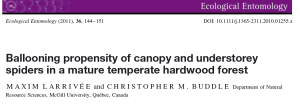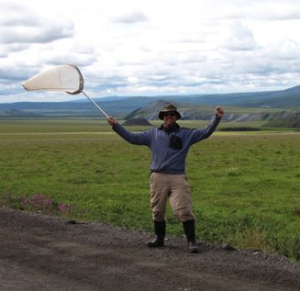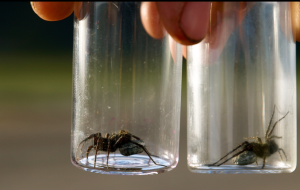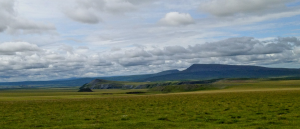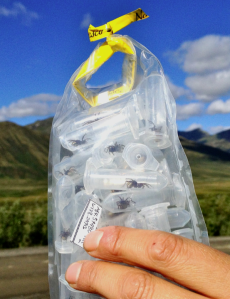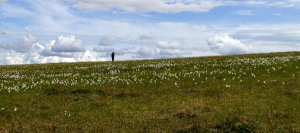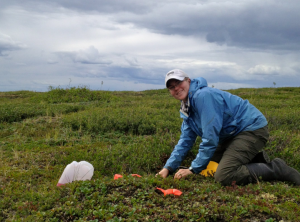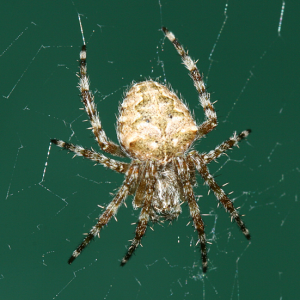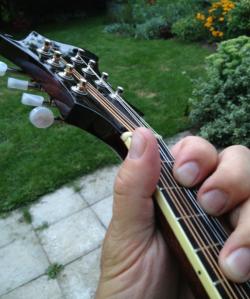Authorship on written work should never be taken lightly. Authorship implies ownership and responsibility for the ideas and content portrayed as the written word. In science, our currency is the written word, in the form of peer-reviewed articles submitted and published in scientific journals, and multi-authored works are the norm (sometimes to ridiculous degrees!). Being an author on a paper is critically important for success in academia: the number of publications on your CV can get you job interviews, scholarships, and often leads to increased research funding. Scientists are often judged by publication metrics, and although we may not like this system, it remains prevalent. With this context I pose the following question: What is the process by which an individual is granted the privilege of being an author on a peer-reviewed journal article? This blog post will provide an objective method to determine authorship for a publication, and by sharing it, I hope it helps bring some clarity to the issue.
(Note: as a biologist, I am drawing from my experiences publishing in the fields of ecology and entomology, and in my role as the Editor-in-Chief for a scientific journal, The Canadian Entomologist - the ideas presented below may not be transferable to other fields of study).
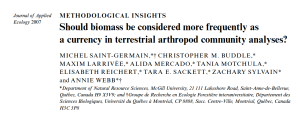
A paper that resulted from a graduate class; should all these individuals be authors on this paper? (yes, of course!)
The method outlined below starts by thinking about five main stages in the publication process, and there are individuals associated with each stage:
1. Research concept, framework, and question: The research process leading to a publication has a conceptual backbone - it is the overarching research framework. The background ideas and concepts that initiate the research that leads to a publication come from somewhere (…and someone). Although the end product of research may be the publication, a good research question is at the start, and drives the entire process. Without a solid framework for research, and a clear question, the research will simply never be in a form suitable for publication. The person (or people) who developed the big-picture ideas, research framework, and research question are to be considered as authors on the final publication. In the University framework, this is often an academic who has developed a laboratory and research program around a thematic area of study.
2. Funding. Someone has to pay for research - whether it be a large, collaborative research grant that supports many graduate students, or whether it be a small grant from a local conservation agency. An individual scientist applied for money, and was able to support the research that leads to the publication. These monies could directly support the research (e.g., provide travel funds, purchase of equipment), the individual doing the research (e.g., pays the graduate student stipend, or technician), or the monies could offset the costs associated with the publication process itself (e.g., many journals charge authors to submit their work, also known as page charges). The individual(s) who pay for the research need to be considered as authors on the final publication resulting from the research. More often than not, this individual is the main “supervisor” of a research laboratory, but could also be important collaborators on grant applications, often from other Universities or Institutions.
3. Research design and data collection: Once the overall research question is in place, and funding secured, the actual research must be designed and executed. These are placed together under one heading because it is difficult to separate the two, nor should they be separated. You cannot design a project without attention to how data are collected, nor can you collect data without a clear design. In a typical University environment, Master’s and PhD students are intimately associated with this part of the research equation, and spend a very significant portion of their time in design and data collection mode. Without a doubt, the individual(s) who “design and do” the research must be considered as authors.
4. Data analyses, and manuscript preparation: The next step in the process is taking the data, crunching the numbers, preparing figures and tables, and writing a first draft of the manuscript. This is a very important step in the process, as this is the stage where the research gets transformed into a cohesive form. In a typical University laboratory, this is often done by Master’s students, PhD students, or post-docs, and the product of this stage is often (part of) a graduate student’s thesis. However, it is also quite likely that a research associate, technician, or Honour’s student be involved at this stage, or that this stage is done by multiple individuals. For example, data management and analyses may be done by a research technician whereas the head researcher does the bulk of the synthetic writing. Regardless, one or many individuals may be involved in this stage of the publication process, and all of these people must be considered as authors on the final product.
5. Editing, manuscript submission, and the post-submission process: The aforementioned stage is certainly not the final stage. A great deal of time and effort goes into the editing process, and quite often the editing and re-writing of manuscripts is done by different individuals than those who wrote the first draft. Important collaborators and colleagues may be asked to read and edit the first draft and/or other students within a laboratory may work to fine-tune a manuscript. Most likely, the supervisor of a graduate students invests a lot of time and energy at this stage, and works to get the manuscript in a form that is ready to be submitted to a scientific journal. The submission process itself can also be difficult and daunting - papers must be formatted to fit the style requirements for specific journals, and the on-line submission process can take a long time. After the manuscript has been submitted and reviewed by peers, it will most likely return to authors with requests for revisions. These revisions can be lengthy, difficult, and require significant input (perhaps from many individuals). For all these reasons, this fifth stage of the publication process cannot be undervalued, and the individual(s) associated with editing, submitting and dealing with revisions must be considered as authors.
Those five categories help define the main stages that lead to a scientific publication, and there are individuals associated with each stage. Here’s the formula to consider adopting when considering which individuals should be authors on the final product: if an individual contributed significantly to three or more of the above stages, they should be an author on the final paper. Here’s an example: in a ‘typical’ research laboratory, the supervisor likely has a big-picture research question that s/he is working on (Stage 1) and has secured funding to complete that project (Stage 2). A Master’s student, working with this supervisor, will work on the design and collect the data (Stage 3), and as they prepare their thesis, will do the bulk of the data analysis and write the first draft of the paper (Stage 4). In most cases, the editing and manuscript submission process is shared by the supervisor and the student, and both individuals are likely involved with the revisions of the manuscript after it has been peer-reviewed (Stage 5). In this case, both individuals clearly contributed to at least three of five categories, and the paper should be authored by both individuals.
What about the research assistant that helped collect data? - since they only contributed to Stage 3, they are not considered as an author. The same is true of a collaborator at a different University who may have helped secure the funding (Stage 2), but did not help with the process in any other way - they do not qualify as authors on this work. It is quite possible that a post-doc in a laboratory contributes to multiple stages, even on a single Master’s project. For example, the post-doc may have helped secure the funding, assisted significantly with data analysis, and helped to edit the final paper - this entitles them to authorship.
This entire method may be considered too rigid, and cannot really be implemented given the complexities of the research process, and given personalities and politics associated with the research process. Furthermore, many researchers may include their friends on publications, in hopes that the favour will be returned so both individuals increase their publication numbers. I do not think this is ethical, and overall, if an individual did not contribute to the research process in a significant way, they should not be authors. The method outlined above provides one way to help determine how this ‘significant way’ can be determined objectively. The process is certainly not without fault, nor will it work in all circumstances, but perhaps it will help to define roles and help to consider seriously who should be considered as authors on papers.
I can also admit that I have not always contributed to “3 of 5 stages” on all the paper for which I am an author, so you can call me a hypocrite. That’s OK, (I’ve been called worse), and I reiterate that the process outlined above is context-dependent, and simply provides a framework, or guide, for thinking about this important issue in science.
I am certainly not alone in this discussion, nor with this concept - Paul Friedman wrote about this (in A New Standard for Authorship) and the method in analogous to the one outlined above (although with more categories). Some journals also specify their expectations for authorship. As an example, in its instructions to authors, PNAS states that ‘Authorship should be limited to those who have contributed substantially to the work’, and request that contributions be spelled out clearly. This is a good idea, and forces people to think about the issue.
I’ll finish with two more important points: First, determining authorship, and thinking about authorship, must be a transparent and clear process. Graduate students must not be surprised when their supervisor states that some other researcher will be an author on their work - this should have been clear from the start. A discussion about authorship must occur early in the research process. Full stop.
Second, another key question is the order of authors. For example, when is the student’s name first on a publication, and the supervisor second? What’s the convention for your field of study? Who should be second author when there are four or five co-authors? This is a complicated question and, you guessed it, one that will be addressed in a future blog post!
Please share your thoughts… how does your laboratory deal with the question of authorship on scientific papers?
